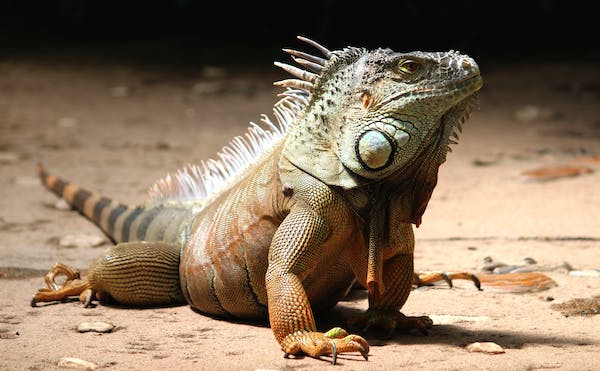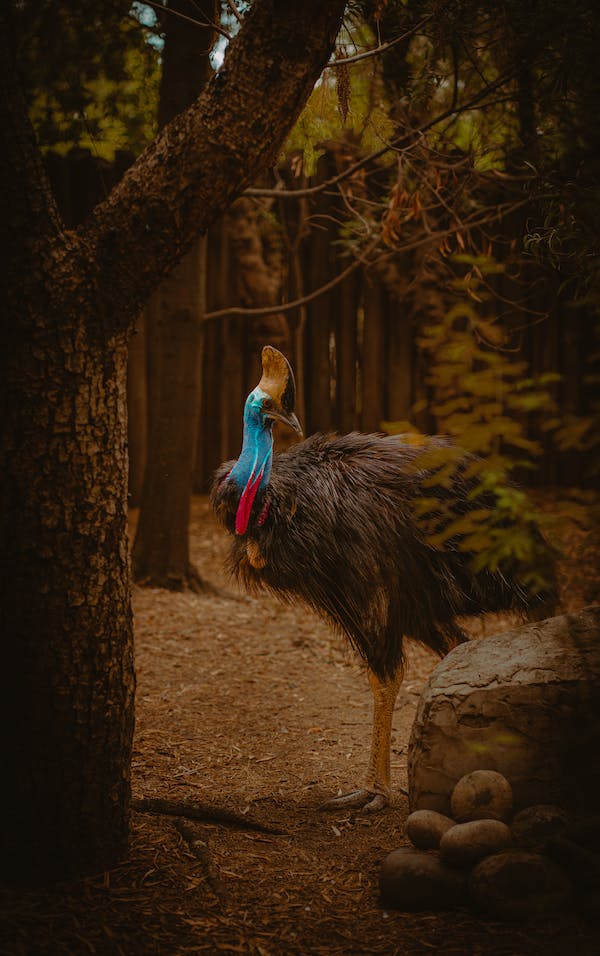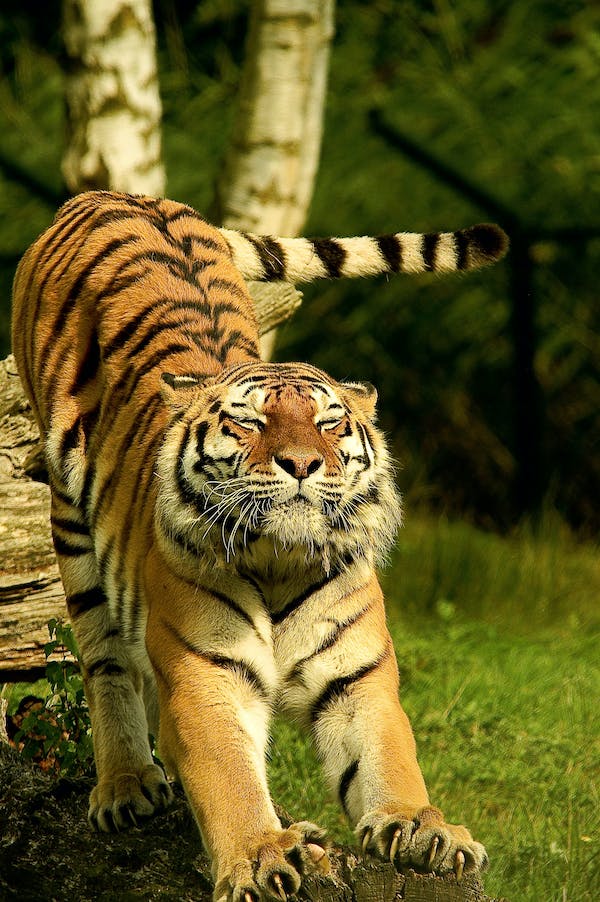Once a part of the Gondwana, Australia completely separated from the ancient supercontinent around 30 million years ago. Since then, it has journeyed and experienced distinct changes in its topography and climate in isolation. Thus, giving birth to the distinct flora and fauna that the continent has today. Over 80% of the mammals, reptiles, and amphibians are only found in the country-continent and nowhere else on the planet.
While you may be aware of the cute and adorable kangaroos, koalas, and wombats, there are more exceptional and wonderful creatures that reside there. So, keep reading below as we’ve listed the most unusual species in Australia – many of which you may never even heard of.
Thorny Devil
Named for their little horns, the thorny devils (Moloch horridus) live in the deserts of the Australian outback. Despite their fearsome designation, these lizards are actually among the least aggressive among the world’s reptiles, mainly feeding on ants which they catch through their tongue and consuming up to 1,000 in every meal.
What’s even remarkable about these creatures is that they drink using the spikes on its body. They rub them on dew-covered grass or any available water source. The moisture flows through the grooves and channels between the spikes directly to their mouth. When threatened, they can even change their color to orange, red, yellow, or gray to blend into the surroundings.
Southern Cassowary
Also called the Australian cassowaries or the double-wattled cassowaries, the southern cassowaries (Casuarius casuarius) has two distinctions under their name. They are the world’s third-largest bird yet are also considered the world’s most dangerous bird. They can stand nearly six feet tall, and weigh as much as kilograms. Apart from their size, these flightless birds are powerful and possess dagger-like claws, which can slice open any predator or humans with one slash.
Though all birds have originated from the dinosaurs, southern cassowaries appear more dinosaur-like with their conspicuous casques, a helmet that grows on top of their head similar to that of the dinosaurs. These birds are vital to their environment as they help in the long-range distribution and germination of trees in the rainforests.
Despite being a keystone species, southern cassowaries’ population is under increasing threat due to car strikes, dog attacks, loss of habitats, and severe natural disasters.
Echidna
Seemingly an offspring of a hedgehog and an anteater, the echidnas (Tachyglossidae) have spikes covering their body and a snout that they use to find food, consisting mainly of termites and ants. They have no teeth, are very shy, and would curl into a bell when scared while using their spines for protection.
Echidnas are the only other egg-laying mammals (monotremes) in the world, aside from the platypus. They lay eggs and keep them in their quoll-like pouch. Gestation is pretty quick, with the puggles or baby echidnas hatching only after ten days. Like other animals, echidnas feed their young with their milk. However, they don’t have nipples but milk rather seeps from the pouch’s skin while the puggle licks it up.
While they’re infrequently seen, echidnas are found across Australia and hold the title as the continent’s most widespread native mammal, wandering in various habitats from rainforests to woodlands, deserts, and snow-covered mountains.
Tasmanian Devil
Once roaming throughout mainland Australia, the Tasmanian Devil (Sarcophilus harrisii) can now only be found in Tasmania, the country’s largest island, and its national parks. They are the world’s largest carnivorous marsupial and were named after their tremendous jaw and hair-raising hunting screams. Yet, they are not dangerous to people, unless trapped or attacked.
Tasmanian devils hunt snakes, birds, and other mammals. They play an important role in Tasmania’s ecosystem as they regulate and deter introduced animals like red foxes and feral cats from proliferating. Thus, helping other native animals thrive. Sadly, Tasmanian devils are now on the brink of extinction due to the incurable Devil Facial Tumor Disease, which wiped out 70% of their population since the 1990s.
Laughing Kookaburra
As their name suggests, the laughing kookaburras (Dacelo novaeguineae) are renowned for their weird screams and scornful laugh. While it may sound like laughter, it’s actually a communal call for these family-oriented, terrestrial tree kingfishers that they usually do during dusk and dawn. As it’s a social behavior, it may not laugh if held alone in captivity.
As small carnivores, the laughing kookaburras will eat anything that crawls, swims, or flies – be it frogs, rodents, lizards, snakes, beetles, bugs, and worms. Thus, helping control their populations. Laughing Kookaburras are found across eastern Australia, but have been introduced to the southwest of Western Australia and Tasmania.
Fitzroy River Turtle
Found only in the Fitzroy Basin in Queensland, Australia, Fitzroy river turtles (Rheodytes leukops) may seem like other normal turtles. What makes them strange is cloacal respiration is their ability to do cloacal respiration or breathe through their butt, earning them the name “bum breathing turtles.” It’s a special adaptation that allows them to obtain most of the oxygen they need from the water. By doing so, they can remain underwater without coming up for an incredible three weeks.
Unfortunately, these fascinating freshwater turtles are listed as Vulnerable under the IUCN List of Threatened Species due to pollution, sedimentation, murky waters, and feral cats, pigs, and foxes hurting their population.
Platypus
Thriving only in Eastern Australia and Tasmania, the platypuses (Ornithorhynchus anatinus) have a distinct duck beak, front-webbed paws, otterlike-foot, and a wide beaver’s tail, making them one of the strangest yet impressive animals on the planet. Adding to that, they also belong to the world’s few venomous mammals, with the males possessing a spur on their hind legs that can administer venom. Though described as extremely painful, the venom isn’t fatal to humans.
Platypuses are not endangered but they’re very reclusive, which means they are hard to find in the wild. They usually spend much of their day in their burrow and are most active during dusk and dawn. They depend on their highly-sensitive bill to find prey by detecting electrical fields in rivers, creeks, and other waterways that they call home.
Sugar Glider
Sugar gliders (Petaurus breviceps) belong to the possum family of Australia and can be found in the northern, eastern, and southern parts of the country. These small, nocturnal, adorable marsupials live primarily in woodlands and forests.
They’re named for their food preference, composed of sweet stuff like nectar, sap, and pollen, and their amazing capability to glide from tree to tree. What allows them to “sail” is their patagium, a skin membrane that they utilize as wings. Meanwhile, they use their long bushy tail for steering and stability while in flight.
Frilled Neck Lizard
Frilled neck lizards’ (Chlamydosaurus kingii) appearance befits them to appear in the next Jurassic Park installment. Their name was derived from the frill around their neck, which in normal situations remains flat but stretches out when threatened to intimidate their predators. They also flap their frills when mating or when trying to dissipate excessive heat.
Frilled neck lizards are commonly found in temperate woodlands and forests. As arboreal lizards, these dragon-like lizards spend much of their day hanging out in trees and eating small vertebrates and insects. Their conservation status is tagged as least concern but their number in the wild is dropping due to feral cats and habitat destruction.
Numbat
Numbats (Myrmecobius fasciatus) are squirrel-like marsupials living in southwest Western Australia. Also called the banded anteater, they are active during the day and feed exclusively on termites which they pick up using their long sticky tongue. At night, they hide in hollow burrows or logs and use their bushy tail to block the entrance.
Once common in southern Australia, the introduction of foxes in the 1800s caused the decline of numbats’ numbers. Today, it’s also being hunted by dingoes, feral cats, and dingoes due to their small size. It’s estimated that there are only less than 1,000 individuals of them in the wild.
Bilby
A popular Easter icon in Australia due to their big, rabbit-resembling ears, the bilbies (Macrotis lagotis) are desert-dwelling marsupials that have existed in the country for at least 15 million years. As natural engineers, bilbies dig complex burrows, serving as their subterranean homes and protection from predators and high temperatures. They eat fruits, seeds, insects, and small animals. Strangely, bilbies rarely need to drink water as they get and keep all the moisture from the food they eat. Today, they can only be found in southwest Queensland, central Australia, and some regions of Western Australia.
Quokka
Dubbed as the “happiest animals on Earth,” the quokkas (Setonix brachyurus) are small marsupials with a cute and friendly appearance. They belong to the same family as wallabies and kangaroos and can be found on a few isolated forests and islands in Western Australia. The macropods are mainly nocturnal, mostly active at night while resting or finding shade during the day. As grazing herbivores, their diet consists of leaves, grasses, tree and shrub buds, roots, succulents, and seeds.
The gestation period for their baby is only a month, but the offspring will stay in the mothers’ pouch for about half a year. While they earned a title due to their little sweet smile, they won’t receive one for being the best mums. Quokka may drop their babies when threatened by predators, allowing the mother to escape.
Tasmanian Tiger
Tasmanian tigers or the thylacines (Thylacinus cynocephalus) are no longer an extant species but are among the most unusual species that once roamed in Australia. Though it bears “tiger” in its name, they’re actually marsupials that possess a pouch. And, while they resemble wild dogs more, the Tasmanian tigers have a strong kangaroo-like tail that they utilize as a tripod to stand upright on their hind legs. When alarmed or threatened, they could hop short distances, serving as their most efficient and quickest way of escape. On 7 September 1936, the last Tasmanian tiger named “Benjamin” died in Beaumaris Zoo in Hobart, Tasmania.
Takeaway
Indeed, Australia is home to many of the planet’s unique species. Sadly, many of them are classified as endangered or have a decreasing population, despite the crucial roles that they play in the natural environment. What’s great is that the government and various organizations are already taking measures to save many of these amazing animals to ensure they continue to thrive in the coming generations.



